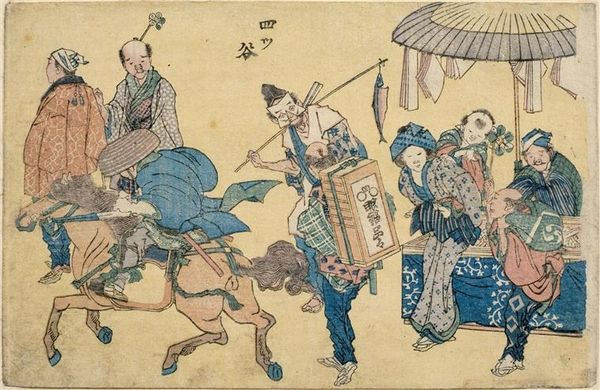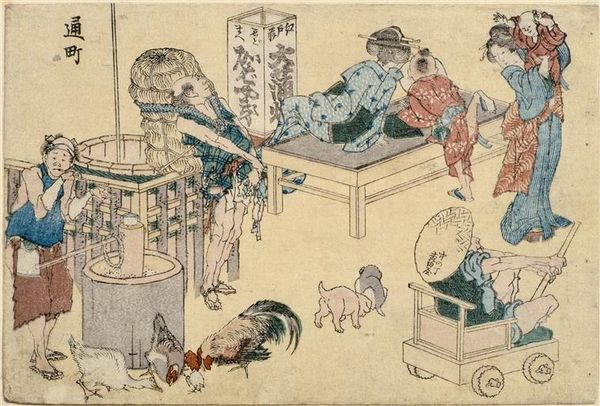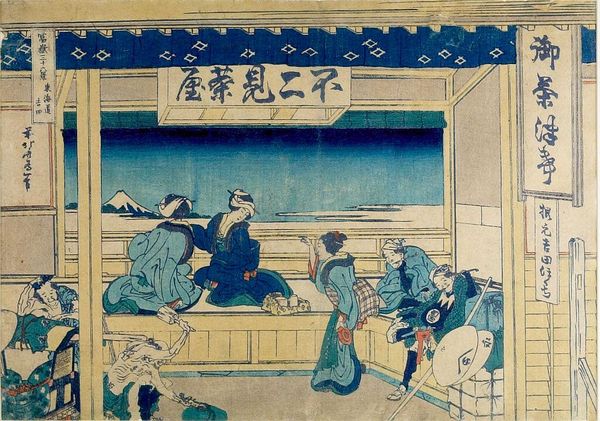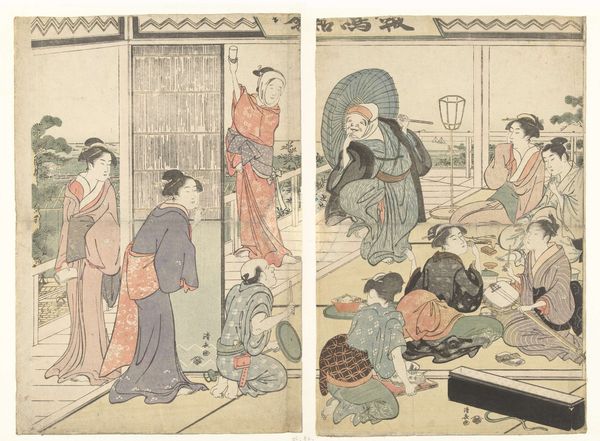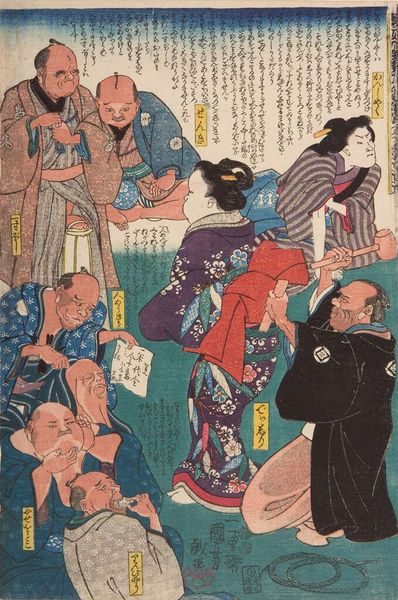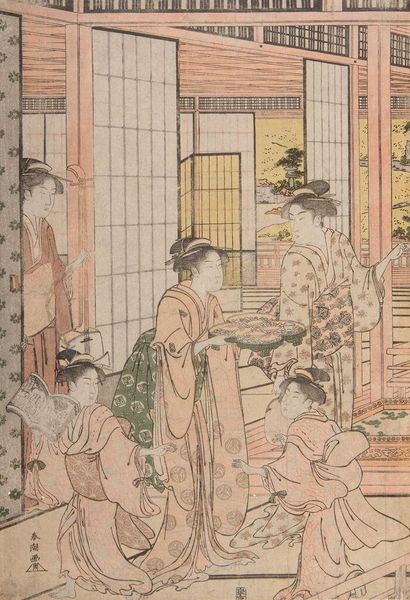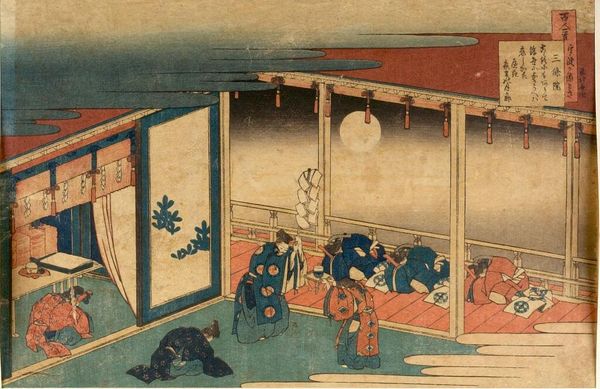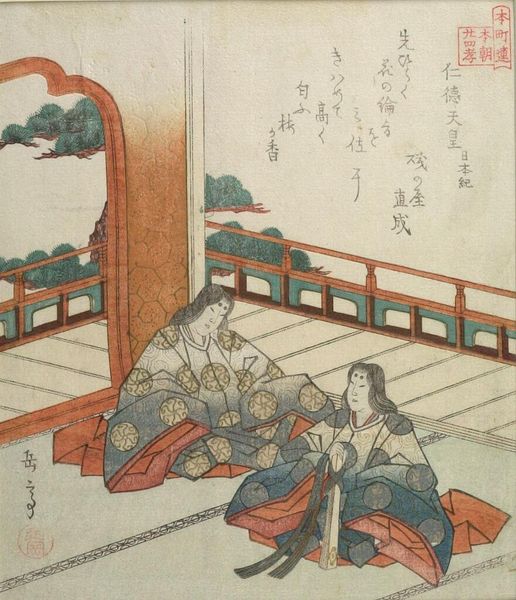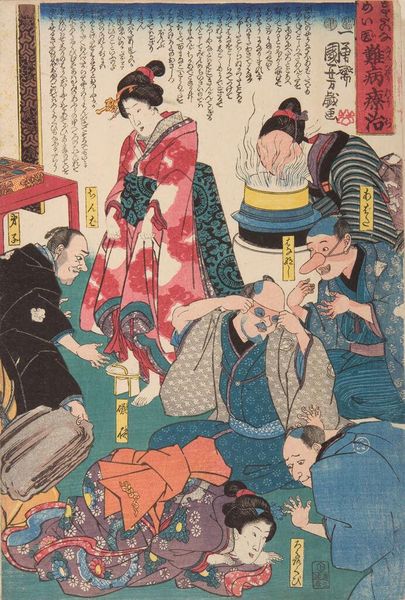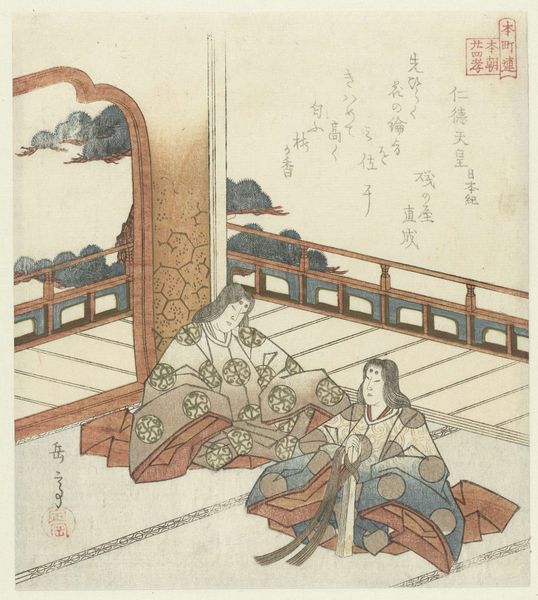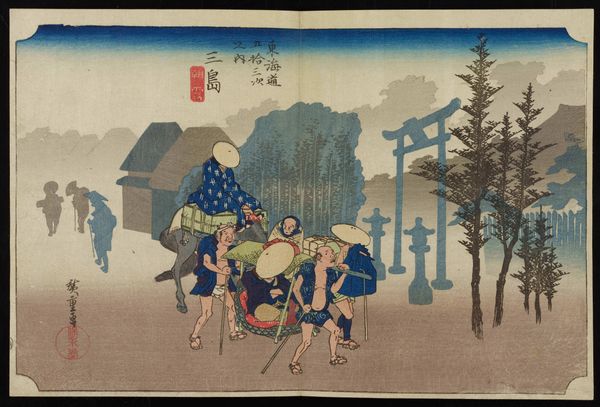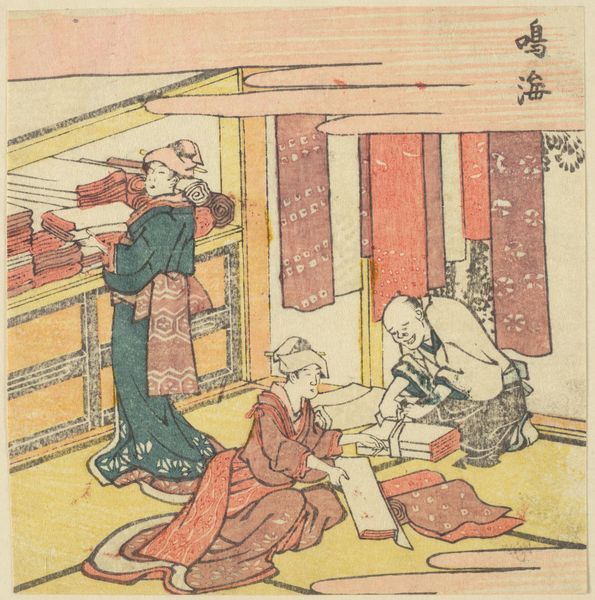
print, woodblock-print
#
portrait
#
narrative-art
# print
#
asian-art
#
ukiyo-e
#
figuration
#
woodblock-print
#
line
#
genre-painting
#
street
Copyright: Public domain
Curator: Katsushika Hokusai’s woodblock print, "Street Scenes Newly Published," created around 1825 and now held at the Guimet Museum in Paris, captures a slice of Edo-period life. Editor: Well, it certainly seems to depict the aftereffects of a very long night. I am struck by the compositional arrangement of reclining figures. The geometry of exhaustion is quite…powerful. Curator: It’s a classic example of Ukiyo-e, floating world imagery meant for mass consumption, focusing on fleeting moments of everyday life. Look at the detail in the fabric patterns, rendered with such meticulous line work. It’s fascinating how he suggests texture and volume using only line and flat color. Editor: Yes, and considering this would have been one print in a large publication, it says something about the role that social ritual must have played to be the scene depicted here. These workers would have been a critical backbone of that very wealthy cultural life that shaped the image. Note also the tension between the exhausted men and the elegant ladies. Is this class tension meant to be a symbolic feature? Curator: I agree. These scenes are staged as narratives about those living between extreme wealth and poverty. Notice, too, the minimal use of perspective, and the layering of figures creating depth. See how that spatial ambiguity flattens the image, forcing the viewer to engage with it as a designed surface? Editor: It almost feels like the artist presents a commentary on the blurred lines between work and leisure for many members of this society. This isn't simply documentation. Hokusai is using these scenes to comment on labor exploitation in Ukiyo culture. Curator: I appreciate how, formally, the interplay of horizontals and verticals—the reclining bodies against the standing figures and architectural elements—creates a dynamic tension within the confined space. Editor: Indeed. When examining the broader narrative around artworks like this, we can see that while the art form seems oriented around floating worlds of cultural bliss, images of work and those who exist in more dire material states persist. Perhaps such tension gives artworks staying power that goes beyond what formal appreciation might otherwise afford.
Comments
No comments
Be the first to comment and join the conversation on the ultimate creative platform.
